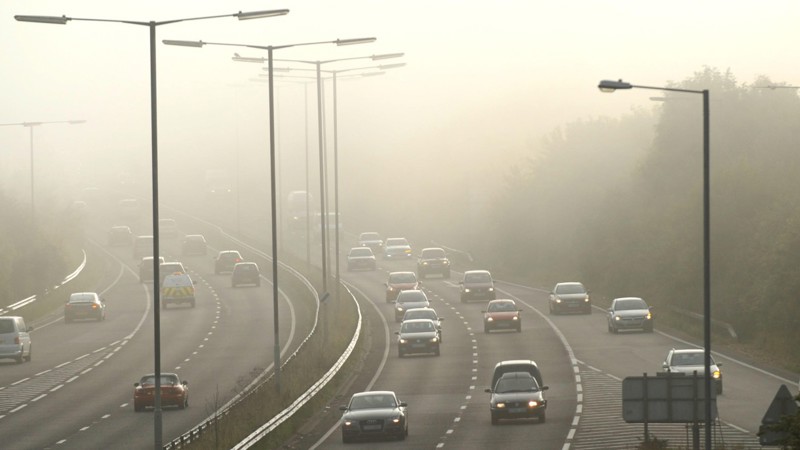Travelling in fog
Fog is a major travel hazard which can affect visibility. It occurs most often in late autumn and towards the end of February, but can be a problem throughout spring and autumn.

Fog often disperses after sunrise but on occasions may last all day or several days.
Before you travel
It’s important to plan your journey in advance, particularly if you’re travelling on routes you’re not familiar with.
- Plan your route
- Check the availability of service areas along your route
- Make sure you know how to operate your headlights and fog lights
- Check your vehicle
- Pack a seasonal kit
- Check the weather forecast. If fog is expected, consider delaying your journey until it clears.
- During periods of extreme weather, adjust when you travel to avoid the worst days and times of day if possible
- Check traffic conditions on our website and on Twitter
When you’re on the road
The following advice will help you stay safe when driving in fog:
- Use dipped headlights, wipers and demisters. Avoid using full beam, as the fog reflects the light back, reducing visibility even further.
- According to the Highway Code, you should use your headlights when visibility is below 100 metres (328 feet).
- Use fog lights only when visibility is seriously reduced and below 100 metres (328 feet).
- Beware of other drivers not using headlights.
- If you really can’t see, consider stopping until it’s safe to continue.
Only drive as fast as conditions allow:
- Create a bigger gap between you and the vehicle in front of you
- Slow down so you can stop within the distance you can see clearly.
- Check your mirrors before you slow down, brake slowly
Note: occasionally while driving, your visibility may be affected by smoke or dust. In these situations, you should follow the same advice as for driving in fog.
Follow the Highway Code's advice on foggy weather.
How we help you
On parts of our network we use fog detection systems, which will automatically set our roadside signs to warn you when visibility is reduced.
Fog can be very localised - sometimes signs may indicate fog, but nothing is present at that location.
What if I break down?
If your vehicle has a problem, or you get into trouble on a motorway, stay calm and try to exit at the next junction or motorway service area.
Find more advice on what to do if you break down.
Top tips for driving in fog
Listen out for other vehicles
If visibility is very limited, wind down your windows at junctions and crossroads to allow you to listen out for approaching traffic.
Keep your windscreen clear
Ensure the heater is set to windscreen de-misting and open all the vents.
